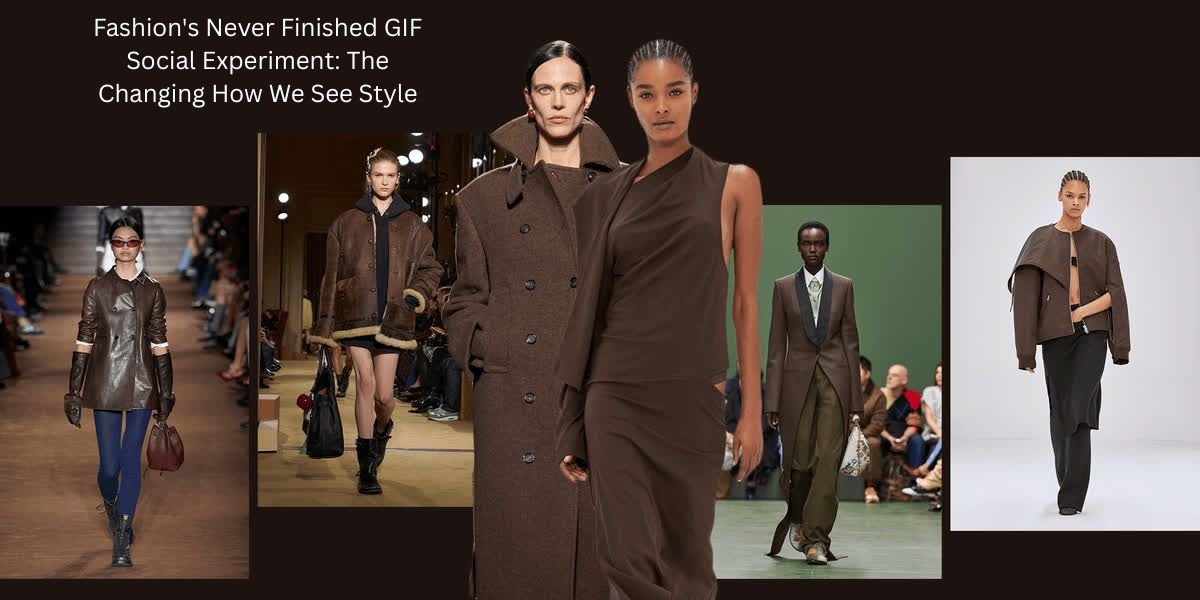1. What Does “Fashion’s Never Finished GIF Social Experiment ” Really Mean?
The phrase suggests that fashion is always evolving—never static, never final. Just like culture, it adapts, reinvents, and reflects the times. The social experiment around looping GIFs emphasizes that creativity doesn’t stop at a single collection or look.
2. How a Simple GIF Sparked a Social Experiment in Style
Instead of polished runways or glossy ads, this project used a looping GIF. The repetition itself became the message: style is ongoing, never ending, and never fully “done.” This digital simplicity made the campaign feel relatable and disruptive at the same time.
3. Why Fashion and Digital Media Are Becoming Inseparable
Fashion is no longer only about clothing—it’s about how people experience it online. Social platforms, GIFs, memes, and viral clips are shaping how trends spread. This experiment highlighted how digital formats can redefine fashion storytelling.
4. The Psychology Behind Watching Clothes “Never End”
Humans are naturally drawn to loops. The endless cycle creates both comfort and curiosity. In fashion, this translates to a subconscious message: there will always be another style, another drop, another collection.
5. From Runway to GIF: A New Medium of Expression
Traditionally, designers showcased creativity on runways. Now, digital tools like GIFs, TikToks, and AR filters allow experimentation beyond physical shows. The GIF experiment blurred lines between fashion and art, proving that even a few seconds of repetition can carry a cultural message.
6. How Social Media Users Reacted to the Experiment
Responses were mixed but passionate. Some praised it as a clever commentary on fast fashion’s constant churn. Others saw it as a critique of consumerism. Either way, it sparked conversation—which is exactly what an experiment should do.
7. What This Says About Fast Fashion vs. Slow Fashion
Fast fashion thrives on constant turnover, while slow fashion encourages timeless, sustainable pieces. The endless loop of the GIF symbolized both: the relentless cycle of trends and the idea that fashion has no true endpoint.
8. The Power of Looping Images in Cultural Commentary
GIFs are easy to consume, share, and remix. By using this medium, the experiment tapped into a universal digital language. It became less about clothes and more about how society views consumption and creativity.
9. Is Fashion Ever Truly Complete—or Always in Progress?
Unlike art pieces that can be “finished,” fashion lives on through wear, reuse, and reinvention. Each outfit is a remix of the past. The social experiment invited viewers to think: maybe fashion is never complete, only paused until the next interpretation.
10. How Digital Fashion Experiments Shape Consumer Thinking
Shoppers today don’t just buy clothes—they buy into movements and ideas. By engaging people through a GIF experiment, brands showed they could influence thought, not just style. Consumers began to question whether they were part of the loop—or breaking free from it.
11. Lessons for Brands: Storytelling Beyond the Runway
Brands that embrace experimental storytelling will resonate more with younger audiences. Fashion isn’t just fabric; it’s narrative, philosophy, and social conversation. The GIF format was a bold way to break the traditional mold and connect in a modern way.
12. The Future of Fashion Experiments in the GIF Era
We may see more experiments that merge tech, fashion, and social media. From NFTs to AR outfits, the idea that “fashion’s never finished” will continue in digital spaces. The GIF experiment was just a starting point in reimagining how we perceive clothing and creativity.
✨ Closing Thought:
The “Fashion’s Never Finished” GIF experiment showed that fashion is not about finality but about motion, loops, and constant reinvention. Whether you see it as critique or celebration, one thing is clear: in the digital age, fashion isn’t just worn—it’s experienced.

